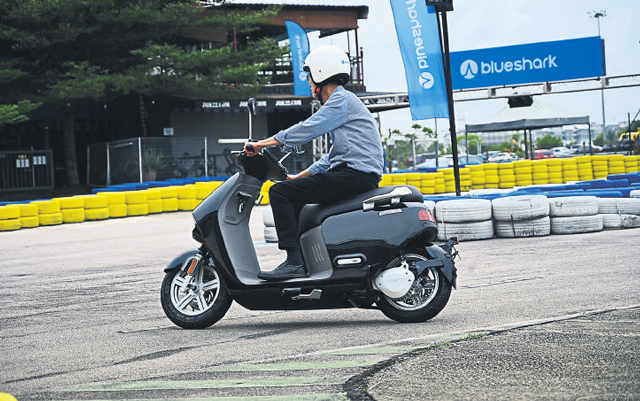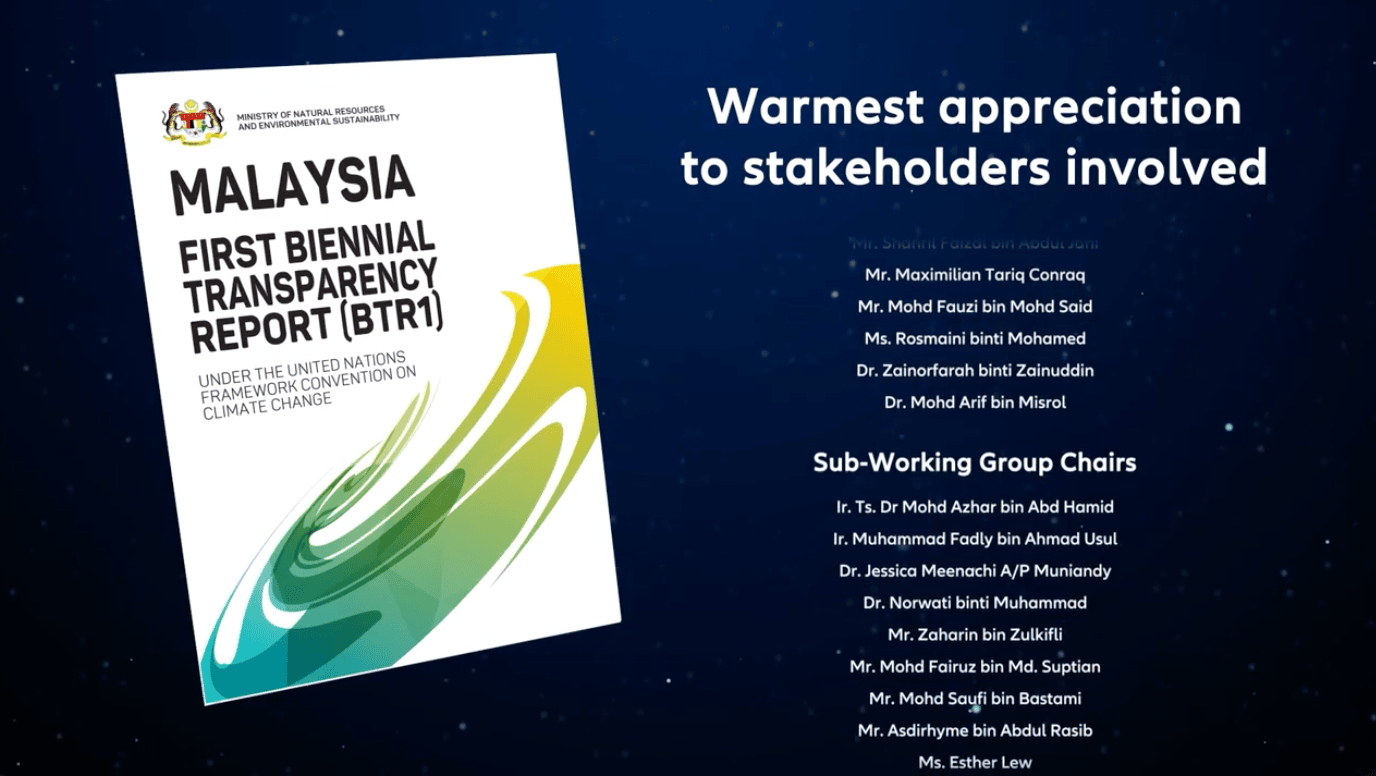
The nation aims for EVs to represent 15% of TIV by 2030, 80% by 2050
by SHAUQI WAHAB & ZAHIN ZAILANI
AS THE world grapples with the urgent need for sustainable solutions, Malaysia stands poised at the forefront of an emerging electric vehicle (EV) revolution.
Malaysia has aimed for EVs to account for 15% of the total industry volume (TIV) by 2030 and 80% by 2050, aligned with the Low Carbon Mobility Blueprint (LCMB) and the National Energy Transition Roadmap (NETR).
The Malaysian Automotive Association (MAA) also forecasts that EVs will contribute 2% of 2024 TIV, equating to 14,800 units.
Malaysian Green Technology and Climate Change Corporation (MGTC) group CEO Shamsul Bahar Mohd Nor said Malaysia is on track to achieve its EV adoption targets, buoyed by strong governmental support and collaborative efforts across various sectors.
The government deter mined that by 2025, half of the new vehicles procured or leased for all ministries will be EVs.
“This commitment will also extend to government-linked companies,” he noted.
He added that the government’s ambitious goal of establishing 10,000 public charging points by 2025 underscores its commitment to facilitating EV adoption nationwide.
“While the target may seem quite farfetched, both the government and private entities are working together to achieve the numbers, which are deemed necessary,” he said.
Additional Efforts Needed
EV tech company Blueshark Ecosystem Sdn Bhd group COO (Asean) Jin Chan said it envisions exponential market growth in the coming years, driven by factors such as wider market acceptance, infrastructure expansion and greater consumer choice.
However, while market projections indicate growth, additional efforts are needed to meet ambitious targets.
Chan stressed the importance of addressing key concerns, including the lack of public chargers and long recharge times, particularly for two-wheeled EVs (2WEVs).
“Many 2WEV riders, particularly those who depend on their motorcycles as primary transportation, cannot afford the lengthy charging times of EVs, which is where fast battery swapping can make a difference, but only if there is widespread use of such facilities like in Taiwan, for example,” he told The Malaysian Reserve (TMR).
Meanwhile, Malaysia Automotive, Robotics and Internet of Things Institute (MARii) CEO Azrul Reza Aziz emphasised the nation’s long-term commitment to sustainable mobility.
“While evaluating the success of Malaysia’s EVs may be premature, positive indicators suggest we are moving in the right direction.
“With ambitious targets set by the government, including 20% of TIV comprising xEVs by 2030, Malaysia demonstrates a robust commitment to electric mobility,” he said.
Azrul Reza also believed that though the sector’s development was parked under the mission towards net zero, the rest of the segments of the EV value chain also provided opportunities for the sector to engage with other missions.
“As announced by the Investment, Trade and Industry (MITI) Minister Tengku Datuk Seri Zafrul Tengku Abdul Aziz, Perusahaan Otomobil Kedua Sdn Bhd’s (Perodua) first EV which will be developed as an affordable model potentially priced under the RM100,000 mark, will enter mass production by the end of 2025,” he stated.

EV Market Current Status
Although only around 2% of vehicles in Malaysia are electric, Chan said EV penetration remains modest as there are promising signs of growth.
“MAA reported that EV sales in Malaysia skyrocketed by 286% in 2023, with a total of 10,159 units delivered last year compared to 2,631 in 2022 (itself a tenfold increase from 277 units the year prior), so the potential are good,” he said.
This surge in sales reflects growing consumer interest and the effectiveness of government initiatives and incentives aimed at promoting EV adoption.
He also emphasised the importance of a holistic EV strategy.
“The government’s various initiatives and exemptions have been very encouraging for EV adoption and the decarbonisation of transportation in Malaysia,” he added.
He highlighted the incentives, adding that it supported EV manufacturers and helped expand the EV industry ecosystem.

“The MARiiCas RM2,400 rebate for 2WEV purchases (with 1,995 applications approved with rebates valued at RM4.8 million as of March 31) is a compelling stimulus, but it must be given time to fully take root as we found that the public at large still requires a lot more awareness and education on the merits of electromobility,” he elaborated.
Meanwhile, Shamsul Bahar said MGTC is at the forefront of promoting sustainable transportation options, particularly the adoption of EVs across Malaysia.
“MGTC provides policy advocacy, technical assistance and studies to support EV charging development in Malaysia,” he told TMR.
He noted the current green mobility shift in the nation has picked up tremendously since the gazetting of the LCMB in 2021 and the establishment of the National EV Task-force in 2020.
He added that MGTC strived to raise awareness and introduce EV technology to both the general public and academia to get better-targeted growth results.
Meanwhile, MARii’s insights unveil a landscape ripe with initiatives aimed at fostering EV adoption and nurturing a vibrant ecosystem.
From strategic policies outlined in the National Automotive Policy (NAP) 2020 to incentives bolstering the EV industry’s growth, Azrul Reza said Malaysia is currently adopting a holistic approach.
Observable Trends and Leading EVs
Chan believed that the environmental, social and governance (ESG) plays a role in the shift towards EV transition, where companies must report and offset their carbon footprint or face penalties.
He said governments, through policies, EV incentives, and penalties; corporations, through ESG initiatives and fleet electrification; and consumers, through greater receptivity of EVs and EV adoption, are driving the shift in mindsets and creating a movement in favour of EVs as the de facto mobility platform over several decades.
With an influx of new EV market entrants, primarily from China, Chan saw competition intensifies, leading to price competition and greater consumer choice.
“This can only be good for the consumer and for innovation overall, as the nation’s EV industry takes shape from its formative years over the past decade,” he noted.
Also, established motoring brands and emerging players vied for market dominance, positioning Malaysia as a competitive arena for EV innovation.
Looking ahead, Blueshark Ecosystem remains committed to its leadership role in the 2WEV segment.
On the other hand, Shamsul Bahar said the launch of the LCMB has spurred the government to offer a range of incentives, including tax exemptions for importing EVs, tax rebates for installing charging infrastructure and financial support under the Green Technolog y Financing Scheme (GTFS).
“There are slightly above 16,000 battery electric vehicles (BEV) in Malaysia as of 2023,” he said.
Furthermore, efforts are underway to promote the production of affordable EVs through tax exemptions for importing EV parts and components.
While the availability of affordable EV models remains limited, he said the government’s focus on incentivising local production of completely knocked down (CKD) vehicles aims to address this gap and make EVs more accessible to Malaysian consumers.
He saw initiatives such as rebates for electric motorcycles and the adoption of EVs in mass transportation plans by local municipalities further drive the momentum towards sustainable mobility solutions.
Meanwhile, Azrul Reza believed Malaysia stands as a beacon of innovation and collaboration in EVs.
“We are witnessing a dynamic interplay of various brands and players contributing to the advancement of sustainable mobility,” he said.
From global automotive giants to local manufacturers, Malaysia’s EV landscape thrives on diversity, fostering innovation and accessibility for consumers.
Azrul Reza noted that EVs in Malaysia encompass a wide range of brands such as BMW, MINI, Nissan, Renault, Ora, Hyundai, Kia, Mercedes-Benz, Volkswagen, Volvo, BYD, Audi, Lotus and many others.
TMR also spoke with a Proton Holdings Bhd spokesperson who gave their insight into the EV market for 2024.
They expect that Sime Darby Motors Sdn Bhd’s BYD Atto 3 model, which was launched in Malaysia in December 2022, will be coming out on top this year.
Last year, the model sold 9,190 units, or a 298.5% increase from 2022, and this year’s potential is forecasted to be around 15,000 to 20,000 units.
The Atto 3 is an e-SUV with a starting price of RM149,800 with 150 kilowatts of maximum power, able to go from zero to 100kmh in approximately seven seconds and have a range of 480km in one charge.
In terms of charging, the Atto 3 can reach from zero to 80% in just 45 minutes of charging using a DC charger.
This puts it on the more affordable end of EVs compared to other models which hover around the RM200,000 mark yet are still quite on par with other EVs in the market.

Chan says South-East Asian countries are expected to witness exponential growth in the 2WEV market (Pic courtesy of Blueshark Ecosystem)
Anticipated Increase in Adoption
As Malaysia strives to become a manufacturing and assembly hub for EVs in the Asean region, Chan believes significant growth in adoption is anticipated.
Market projections suggest a doubling of EV volumes compared to previous years, driven by domestic market growth and increased demand from neighbouring countries.
“It is only set to increase exponentially as market acceptance of EVs is positive, improved infrastructure, enhanced consumer choice and the impending removal of fuel subsidies looms,” he said.
Chan added that the road to mass adoption involves making EVs accessible to everyone while establishing robust infrastructure support.
Over the next decade, he believes South-East Asian countries are expected to witness exponential growth in the 2WEV market, surpassing regions like Europe and East Asia.
Shamsul Bahar said the government’s commitment to transitioning to renewable energy (RE), coupled with advancements in EV technolog y and research capabilities, bode well for the future of sustainable transportation in the country.
“By 2050, 70% of the energy mix will be from RE,” he noted.
With the introduction of affordable EVs by local manufacturers on the horizon, he said Malaysia is poised to witness a significant uptick in EV adoption.
“This will surely boost EV uptake, as long as there is confidence in this technology’s sustainability,” he said.
Meanwhile, Azrul Reza said MARii foresees a future brimming with promise for EV adoption in Malaysia.
“Malaysians can anticipate a future where more affordable EVs become available, reflecting evolving market dynamics, particularly with Proton and Perodua entering the EV-making business,” he noted.
With government-led initiatives bolstering charging infrastructure and financial institutions offering tailored financing options, the stage is set for accelerated growth.
“The expansion of public charging stations and the installation of fastcharging infrastructure will address one of the key concerns for potential EV buyers — range anxiety,” he clarified.
This year, Azrul Reza expected to see a greater influx of globally recognised EV models entering the Malaysian market.
He emphasised that continued investment in research and development, innovation in battery technology and policy support for EV adoption are needed to establish Malaysia as a regional EV powerhouse.
“It is reasonable to anticipate a substantial increase in EV uptake by the end of this year,” he added.
Sumber: Malaysian Reserve




























